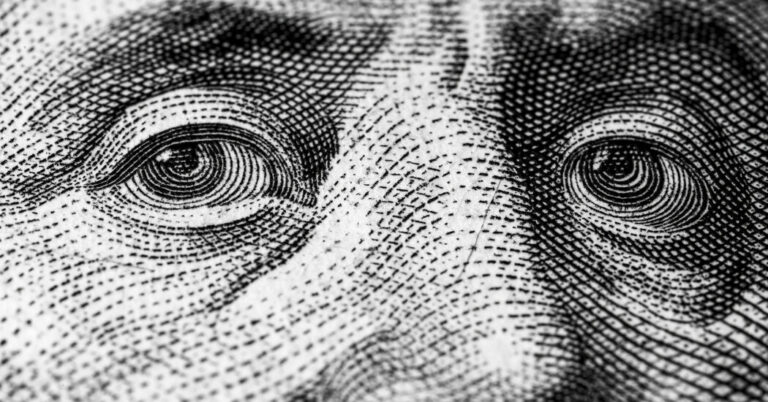The US government debt is over $34 trillion. Did you know that the government is $34 trillion in debt? That’s $34 trillion. Trillion!
Whenever I write about economic policy, I get a lot of emails and comments asking why I don’t say more about the national debt, so I thought it might be useful to talk about how I view the issue of public debt and why it hasn’t figured prominently among my concerns.
Specifically, I would like to make three points. First, $34 trillion is a very large number, but when considered in historical and international context, it is not as frightening as many imagine. Second, to the extent that debt is a concern, making it sustainable is not at all difficult from a purely economic perspective; it is almost entirely a political issue. Finally, people who claim to be deeply concerned about debt are very often hypocrites. Their level of hypocrisy is often unrealistic.
How scary is the debt? Even excluding debts owed by parts of the government to other parts, it’s a big number. The national debt is still about $27 trillion. But our economy is huge, too. Today, the debt-to-GDP ratio is not unprecedented even in the United States. It’s about the same as it was at the end of World War II. It’s considerably lower than Japan’s ratio today, and much lower than the UK’s debt ratio at the end of World War II. Nothing resembling a debt crisis has occurred in any of those cases.
But haven’t there been many debt crises in history? Latin America in the 1980s, Southern Europe in 2010-2012, etc. Nearly all of the debt crises I could find in the historical record involved countries that borrowed in other countries’ currencies, and for some reason their lenders fled, leaving them vulnerable to a liquidity crisis because they couldn’t print cash to repay until the panic subsided. In fact, the euro crisis was quickly contained after Mario Draghi, then president of the European Central Bank, uttered three words: “whatever it takes,” suggesting that banks would provide cash to stressed debtor countries.
As far as I know, the only clear example of a national crisis caused by large amounts of debt denominated in the country’s own currency is France in 1926, but the story is extremely complicated.
Yet even many of us who don’t believe that current debt levels will cause a financial or economic collapse find the projection of a steadily rising debt-to-GDP ratio over the next 30 years a little unsettling. So what would it take to ease this unrest?
Remember that governments, unlike individuals, do not have to repay their debts. How did we pay off the World War II debt? We didn’t. When John F. Kennedy became president, the federal debt was slightly higher than it had been in 1946. But thanks to growth and inflation, the debt-to-GDP ratio had fallen significantly.
So what would it take to stabilize the debt-to-GDP ratio over the next 30 years? Using figures from the Congressional Budget Office, Bobby Cogan and Jessica Vella of the Center for American Progress estimate that taxes would need to be raised or spending cuts of 2.1% of GDP.
This is not a big number! (Yes, the exact number could be higher or lower, but either way it would not change the fundamental point.) The US pays a much lower percentage of GDP in taxes than most other wealthy countries. Even if we collected 2 percentage points more, we would still be a low-tax country and it would not be likely to have a negative impact on the economy. The reason debt stabilization seems so hard is that our politics are so deeply divided that it is very hard to take even small steps toward responsibility.
The politics are deeply divided, primarily among Republicans, who complain about the evils of debt while pursuing policies that push long-term fiscal sustainability further away. In a related analysis, Kogan and Berra estimate that a permanent extension of the 2017 Trump tax cuts, many of which are set to expire after 2025, would significantly worsen the fiscal outlook. But it’s hard to find a Republican in Congress who would oppose such an extension.
To make matters worse, House Republicans are pushing through major cuts to the Internal Revenue Service’s budget, depriving the agency of the resources it needs to crack down on tax evasion by the wealthy. So while they cry about the budget deficit, they’re also trying to find tax cuts and block efforts to collect the taxes high-income Americans owe under current law.
So it’s not the size of the debt that’s the problem, it’s politics, particularly right-wing politics.
That’s why I don’t say more about the debt. America, with its huge economy and relatively low taxes, doesn’t face any fundamental problems of fiscal sustainability. The debt problem is easily solvable, if there was political will. To the extent that debt is a problem, it reflects political dysfunction largely due to the radicalization of the Republican Party. That radicalization worries me deeply for a number of reasons, including the fate of our democracy, but the federal debt is nowhere near the top of the list.

